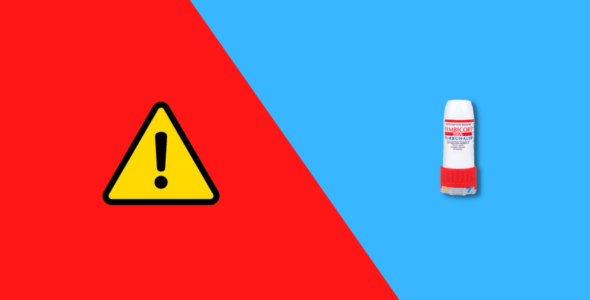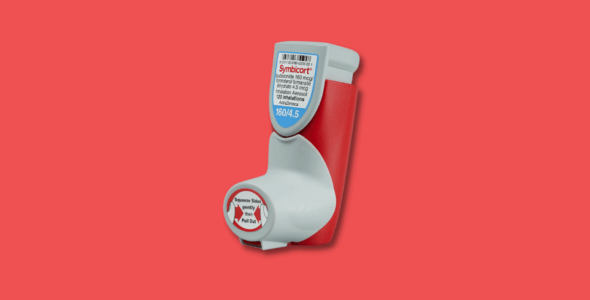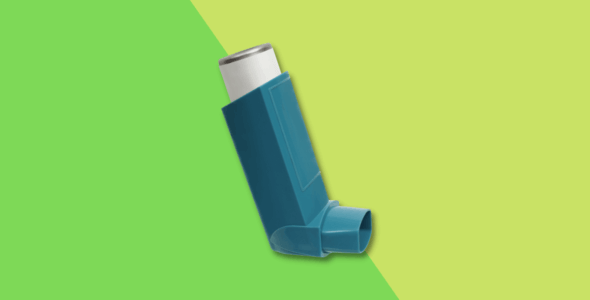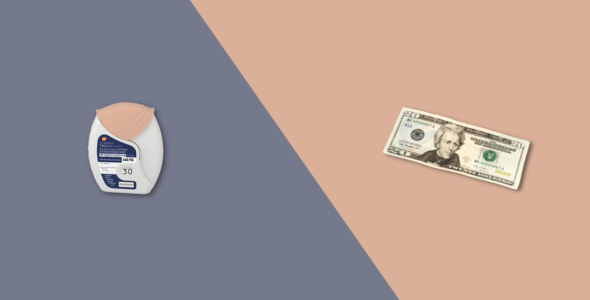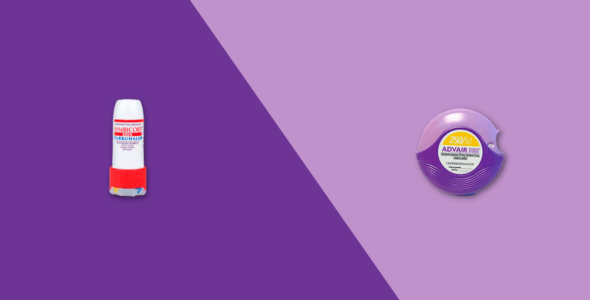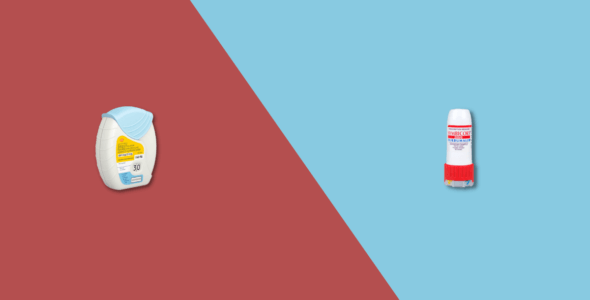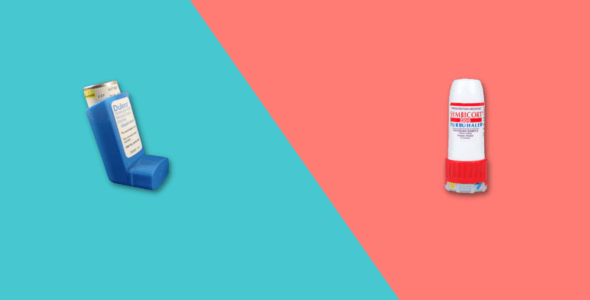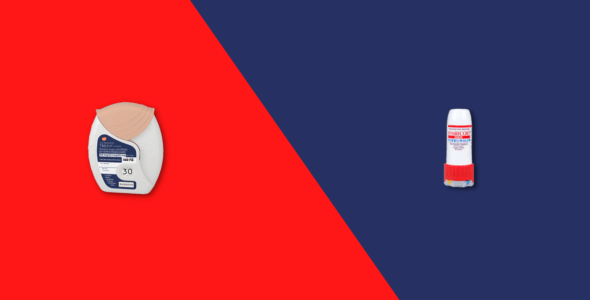Symbicort alternatives: which other medications can I take?
Table of contents
Symbicort is the brand name for an FDA (Food and Drug Administration)-approved prescription drug containing 2 active ingredients, budesonide, an inhaled corticosteroid (ICS), and formoterol fumarate dihydrate, a long-acting beta-agonist (LABA) bronchodilator. Symbicort is indicated for asthma control and prevention in adults and children aged 5 and older. Symbicort is manufactured by AstraZeneca and has FDA approval for the treatment of adults with chronic obstructive pulmonary disease (COPD), including chronic bronchitis and emphysema.
Symbicort reduces inflammation and opens the airways in your lungs, helping to reduce breathing problems. Symbicort is not a short-acting, rescue inhaler and should not be used to treat an acute asthma attack or COPD exacerbation. Here, we will take a look at what Symbicort is, how to use it, and the alternatives to Symbicort available on the market.
Symbicort dosage
Symbicort is available as a metered-dose inhaler in the following doses: 80 mcg/4.5 mcg per actuation, and 160 mcg/4.5 mcg per actuation.
Symbicort comes as a dry powder that is inhaled using an inhaler device called a Turbohaler. You usually take the medicine once a day to prevent symptoms from occurring. It can be taken as a preventative measure before an activity that causes you breathing problems.
Symbicort is a maintenance treatment and not a rescue treatment for asthma attacks or bronchospasm. Use only fast-acting aerosol inhalation medicine for an asthma attack such as albuterol. Seek medical attention if your breathing problems get worse, or if you think your medications are not working.
Rinse your mouth with water after each use of your Symbicort inhaler. This will reduce the chances of developing sore throats or oral thrush. If you miss a dose, skip the missed dose and take your next dose at the normally scheduled time. Do not double your doses.
Store your Symbicort Turbohaler at room temperature in an upright position, with the mouthpiece down. Keep away from heat or an open flame. Discard the canister once the counter reads 0 (zero), or if you have been using this particular Turbohaler for longer than 3 months.
Read the medication guide provided with this medicine for the full drug information, and always speak with a healthcare professional for medical advice about any changes to your dose so they can monitor and evaluate your condition.
RELATED: What is Symbicort?, Symbicort dosage
How to take Symbicort
Symbicort comes in a metered-dose inhaler that needs to be primed before taking your first dose. To prime your Symbicort inhaler hold your inhaler in an upright position and shake for five seconds, remove the mouthpiece cover and press down on the top of your inhaler to release one spray. Repeat this process by shaking for another five seconds and releasing a second spray. After releasing two test sprays, your Symbicort inhaler is ready to use.
To take Symbicort, shake the Symbicort inhaler before each use. Remove the cap and check the mouthpiece is clean. Breathe out releasing as much air out of your lungs as possible. Place the upright mouthpiece in front of your mouth, and breathe in deeply through your mouth while pressing down on the top of the canister once. Hold your breath for 5 to 10 seconds, then breathe out slowly. Repeat this process after one to two minutes. Rinse your mouth out with water to prevent oral fungal infections. Do not swallow the water.
What is the best alternative to Symbicort?
Alternative brand-name medications may be more suitable for certain people, due to side effects from using Symbicort, difficulties using the inhaler device, or Symbicort not working as well as required to manage the symptoms of COPD. Alternatives for the treatment of asthma and COPD include:
- Advair Diskus (fluticasone propionate/salmeterol)
- Advair HFA (fluticasone propionate/salmeterol)
- Breo Ellipta (fluticasone/vilanterol)
- Breztri Aerosphere (budesonide/glycopyrrolate/formoterol)
- Dulera (mometasone/formoterol)
- Flovent HFA (fluticasone)
- Singulair (montelukast)
- Spiriva Respimat (tiotropium)
- Trelegy Ellipta (fluticasone/umeclidinium/vilanterol)
RELATED: Symbicort vs Advair, Trelegy vs Symbicort, Breo Ellipta vs Symbicort, Dulera vs Symbicort
What are cheaper alternatives to Symbicort?
How much Symbicort will cost will depend on how many Symbicort Turbohalers you buy and the retailer you buy them from. Cheaper alternatives to Symbicort include Advair, Dulera, and Breo. The generic version of Symbicort may be a cheaper option than the brand-name inhaler.
Are there generic alternatives to Symbicort?
The U.S. Food and Drug Administration (FDA) has approved the generic alternative Breyna, (budesonide and formoterol fumarate dihydrate inhalation aerosol) to Symbicort.
RELATED: Generic Symbicort Inhaler approved by FDA for asthma and COPD
What is the difference between Symbicort and Advair?
Symbicort and Advair are both combination inhalers. Symbicort contains the corticosteroid (steroid) budesonide. Advair contains the corticosteroid fluticasone. Symbicort contains the long-acting bronchodilator formoterol. Advair contains the long-acting bronchodilator salmeterol.
Both Symbicort and Advair are used as maintenance treatments for COPD, and they are both used to treat asthma. Symbicort is used in children 6 years of age and older. Advair is used in children 4 years of age and older. Symbicort is used as two inhalations twice each day. Advair is used as one inhalation twice a day. Symbicort is available as an inhalation aerosol. Advair comes as an inhalation aerosol and inhalation powder. Advair HFA is available as a metered-dose inhaler.
RELATED: Symbicort vs Advair
Natural alternatives to Symbicort?
Magnesium and fish oil have been evaluated with and without Vitamin C. Vitamin C and fish oil are thought to have an anti-inflammatory action that may reduce the symptoms of asthma.
Herbal alternatives thought to help improve symptoms of asthma include peppermint, ginger, and rosemary. Speak to your doctor for medical advice before switching to any of these natural alternatives.
What are the side effects of Symbicort?
The most common side effects of Symbicort (budesonide/formoterol) in clinical trials include:
- Mild sore throat and coughing
- Throat irritation
- Thrush (fungal infections)
- Nasal congestion
- Inflammation of the sinuses (sinusitis)
- Upper respiratory tract infections
- Back pain
- Headaches
- Stomach discomfort
- Trembling and shaking
- Pneumonia
More serious side effects of Symbicort include
- Disturbed sleep
- Dizziness
- Nausea
- Unusual tiredness or weakness
- Muscle cramps
- Blurred vision
- Cataracts, or glaucoma
- Immune system problem (eg, Churg-Strauss syndrome)
- Increased risk of bone loss (osteoporosis)
- High blood sugar (hyperglycemia) – symptoms include increased thirst or urination
- Decreases in blood potassium levels (hypokalemia)
- Worsening of breathing problems
- Serious side effects, including chest pain, fast/slow/irregular heartbeat, severe dizziness, fainting, seizures
- Serious allergic reactions such as hives, difficulty breathing, shortness of breath, swelling of your face, lips, tongue, or throat
If you experience any of these serious side effects, stop taking Symbicort and seek medical attention immediately. You are encouraged to report negative side effects of prescription drugs to your healthcare provider or the FDA. Visit www.fda.gov/medwatch, or call 1-800-FDA-1088.
Medically reviewed
A medical professional has reviewed this article.


Jamie Winn, PharmD
Jamie Winn, PharmD
Dr. Jamie Winn received his Doctor of Pharmacy in 2002 from the University of South Carolina College of Pharmacy, Columbia, SC. Jamie is a medical reviewer for NiceRx.


